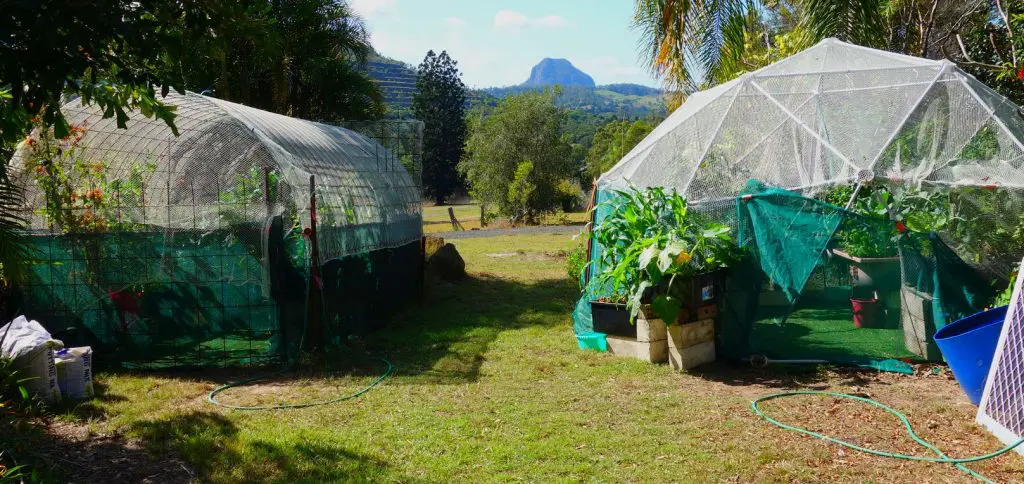This article is a follow-up to ‘My Geodesic Dome Greenhouse Part 1’.
In part one, I detailed the building of my geodesic dome greenhouse. This second part talks about the light problems I had in this dome greenhouse. It really highlights that light is a huge factor in successful gardening.
As I began planting out the containers in my geodesic dome greenhouse and the tunnel, I noticed the plants in the tunnel were growing fastest. At first I put it down to random factors- had I set the seedlings differently? Perhaps the saved seed was fresher? Maybe I should have planted according to the moon cycle?

So I replanted with a fresh batch of seedlings and a different brand of cocopeat but had the exact same problem. As the plants grew to a semi-mature height, the difference in growth became more pronounced. I realised the plants around the edges of the dome were lanky and leggy. The plants in bathtubs in the centre of the dome were booming. I initially put it down to competition with the adjacent green shadecloth wall of the greenhouse. I decided it was the green shadecloth…however, the tunnel has the same shadecloth along its sides, and all the plants in the tunnel were growing beautifully.

Then one day-bingo! Nearby burnoffs filled the atmosphere with visible smoke. I was standing at the inner edge of the dome and saw a fine shadow. This was apparently cast by the walls of the structure itself, and wasn’t visible from the middle of the dome. The shade was too thin to show in photos when I tried to photograph it. In the absence of a light meter, I used a piece of cardboard to cast a shadow which showed up as a darker patch under the centre of the dome or a less dark patch right against the sides.
I untied some of the bird mesh and threw it back off the dome frame. That was when I really saw a difference. The bird mesh casts just enough shade over the plants growing along the edge of the dome to prevent strong growth. I’d always thought the 2cm (3/4″) white knitted bird mesh didn’t throw enough shadow to affect the light coming through it- it only blocks 20%. But it wasn’t the amount of light being blocked: it was the angle of the light which was the problem.
It was high summer when I built the dome and planted it out. By the time I realised I had an issue with light affecting plant growth, it was autumn. The sun was weaker and sitting lower. The light coming down through the top of the dome is the same year-round, but the light hitting the sloping sides of the dome is less in the cooler months. I realised where the angle of the sloping sides is greater, the more light is diffused when the sun sits lower.

Trying to rectify the problem in the short term, I rearranged the plants according to their light needs. I placed herbs around the perimeter areas with the lower light levels. The ultimate solution would be to cover the dome with chicken wire. This would be more expensive and harder to install, but would allow for a much more even distribution of light.
I know it would be much cheaper at this point to shop for fruit and vegetables at my local organic fruit shop…but that wouldn’t be nearly as fun or challenging as growing them myself!













